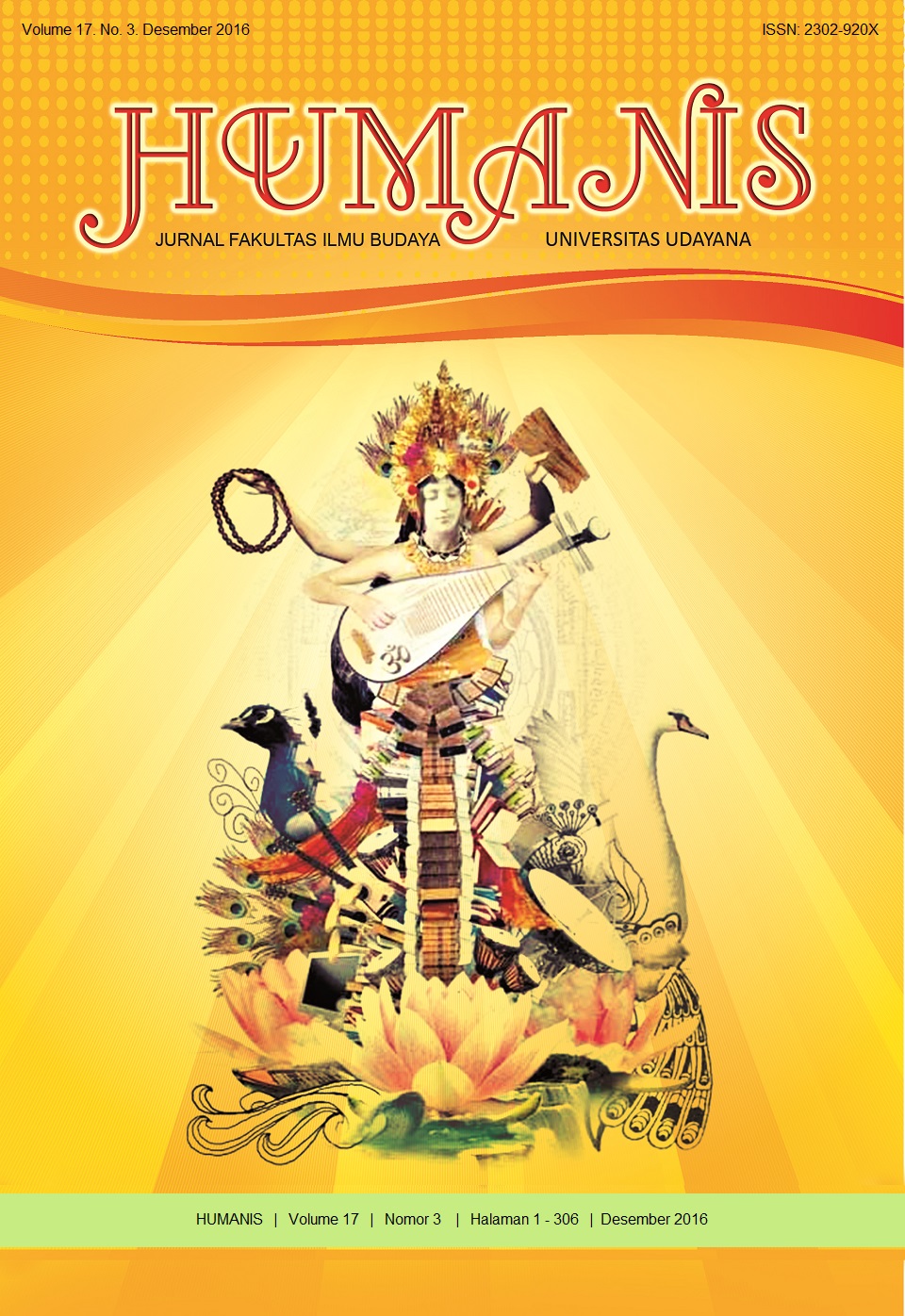Kamus Bali-Indonesia Bidang Istilah Arja dan Gambuh
Abstract
Research on dictionary Balinese-Indonesia classiified for terminology arja and gambuh, to have special purpose to know the shape and quantity of terminology in arja and gambuh. It is used linguistic structural theory by Ferdinand de Saussure, lexicology theory, and lexicograpy theory. In act of preparing data, it is used interview and see method, with tap technique. Followed record technique and note technique. In analysis data is used translational method followed by based technique classify determine element with intermediate technique, related equivalent technique make the same related equivalent technique compare the main thing. Apportion method with based technique for element direct with intermediate technique are expansion technique and infix technique. Methode that used in presentation analysis result in formal method and informal with inductive and deductive technique. The result of this research is terminology in form based word consist of based word in one word, two word, three word, four word. From the based word can make new word. Affixs consist of: preffixs {N-}, {p?-}, {m?-}, {p?N-}, {m?-}, suffixs {-an}, konffixs {p?-/-an}, {m?-/-an}, combination affixs, the word that replay consist, and word complex. Terminology in form of phrase is endosentrik phrase just one main word cocnsist of: nominal phrase and verbal phrase. This research collect 436 terminology. Class of words that are found that nominal word class.


















